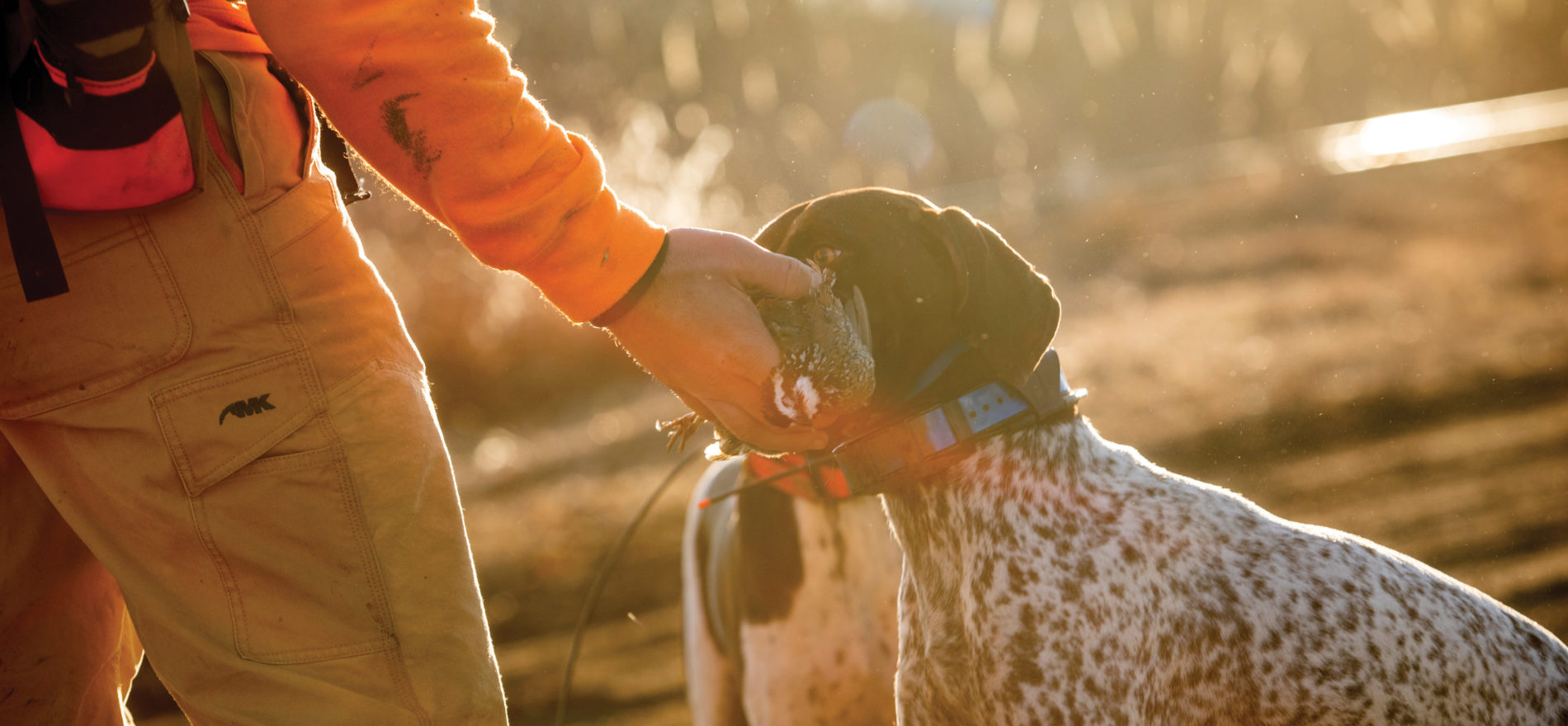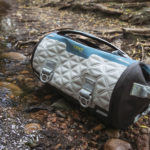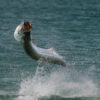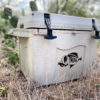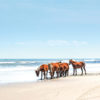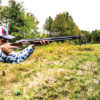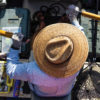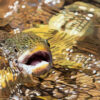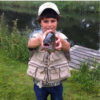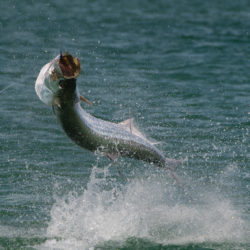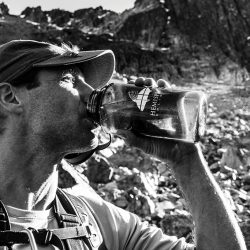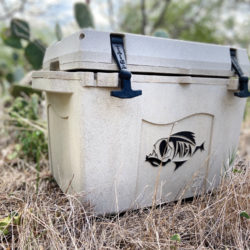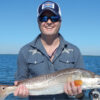Getting a telephone call from my friend Neal Kauder is a good thing.
Cover photo by Kyle LaFerriere Photography
Kauder and his wife Jane own and operate Orapax, an upland bird-hunting preserve in Goochland, Virginia. Nestled along the James River, the 700-acre preserve offers 10 well-maintained fields that are open to the public for hunting pheasant, quail, chukar and ducks. Kauder is an upland hunting guide and professional dog trainer. When he calls, I answer or call back immediately.
In December, Kauder invited me to join him for an afternoon of wingshooting at the preserve. He also invited Blaine Altaffer, CEO of Green Top Sporting Goods, the largest hunting, fishing and outdoor retailer in Virginia.
“The weather is supposed to hold on Thursday with unseasonably warm temperatures,” said Kauder. “We’ve got a variety of birds on hand and Blanco and Rey are ready to go. I’m looking forward to breaking Jasper in and hope you can make it. Blaine and his son Brent are joining the hunt too. We’ll have a great time. Bring Joe.”
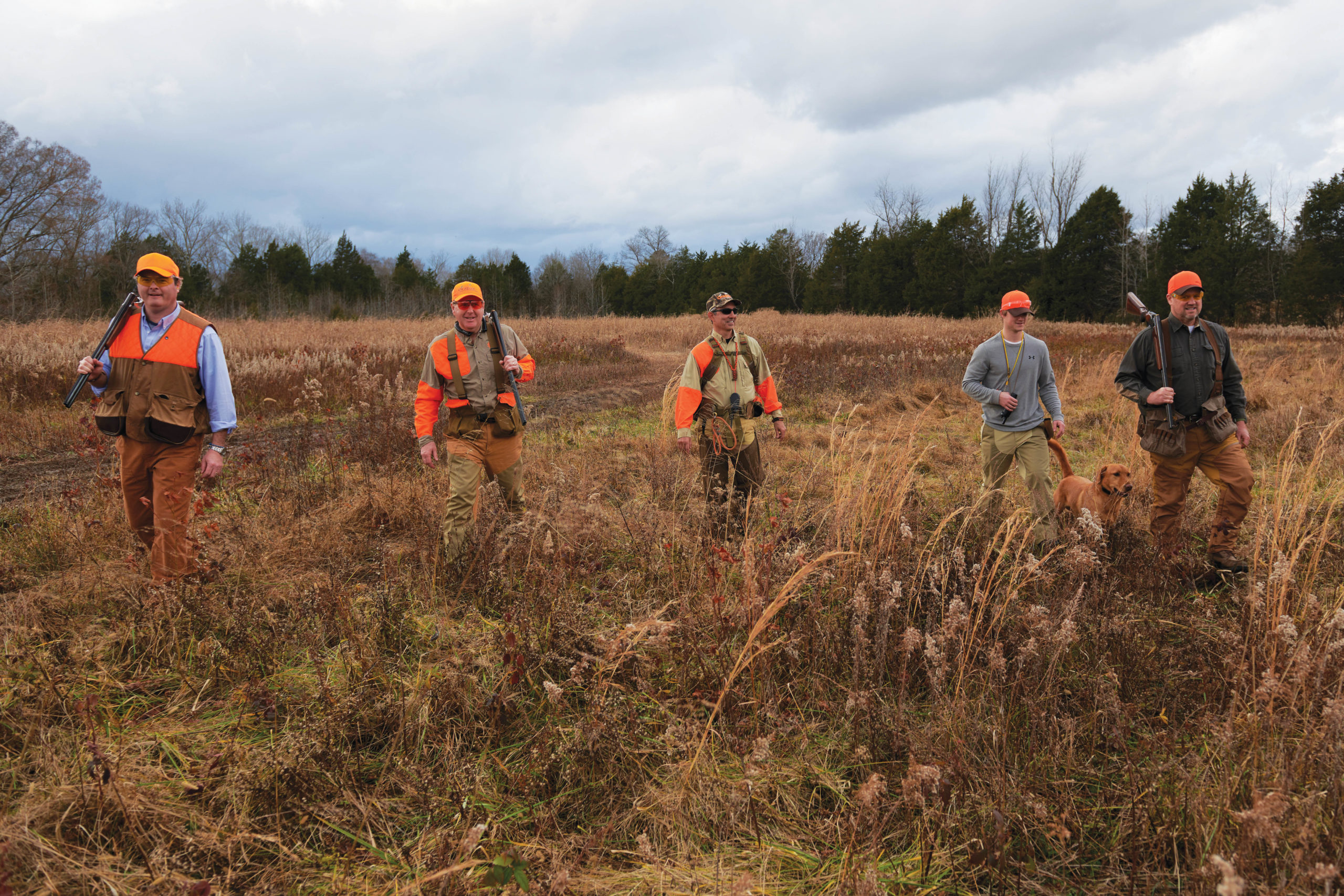
I asked Joe Shields, my colleague at this magazine, to come along. Shields is new to hunting and more familiar with a fly rod than a shotgun. Hunting at a game preserve like Orapax is the perfect opportunity to introduce beginners to this exciting tradition. And it’s imperative to introduce new people to upland hunting—more so now than ever before.
I am an active participant in Virginia’s Quail Recovery Initiative. I am also a bird hunter and am well aware of the challenges that face today’s wingshooters.
Virginia has a long history of upland bird hunting. In the western part of the Commonwealth, the forested peaks of the Blue Ridge and Appalachian mountains have long been the preferred home of ruffed grouse. These birds thrive in young forests, however, and efforts to preserve older forests have affected the habitats in which they thrive.
Eric Kallen
The same is true for the migratory American woodcock, which also takes refuge in these forests, especially in late winter. Some of these birds permanently reside in Virginia and thrive in young forests, especially in wet thickets and woodlands.
According to the Virginia Department of Game & Inland Fisheries (VDGIF), in 1973, more than 1.2 million Bobwhite quail were harvested in Virginia by 143,000 quail hunters. Bobwhite quail require habitats full of native grasses and shrubs where they can nest. The VDGIF reports a recent annual harvest totaled approximately 12,000 wild quail killed by 8,000 hunters.
Loss of habitat is responsible for the quail’s population decline. The promise of restoring healthy quail and other upland bird habitats depends on the involvement of private land owners and game preserves. Limited lumbering, controlled burns, herbicides and other habitat-creating measures are also helping.
The landscape for upland birds, both literally and figuratively, has clearly changed. Modern clean-farming techniques, urban and suburban landscapes, houses and strip malls have eliminated much of the habitat upland birds require. In many areas, these once plentiful birds have been reduced to isolated pockets; they are rarely seen or heard. The impact on the numbers of bird hunters in Virginia is equally dramatic; the VDGIF estimates the number of quail hunters here has dropped by 90% since 1966.
This trend is troubling for a number of reasons, especially since hunters are the financial supporters of wildlife conservation. Set in motion by an 80-year-old piece of legislation called the Federal Aid in Wildlife Restoration Act, hunters have played an increasingly critical role in conservation. At a time when many states are struggling to find the funds for protecting fish, wildlife and habitat, the 11% tax placed on the sales of firearms and ammunition has provided more than $12 billion for state wildlife conservation programs.
“It’s not just hunters who benefit from hunting, its everyone,” said Jared Wiklund, public relations manager for Pheasants Forever. “Birdwatchers, hikers and bikers—anyone who enjoys accessing public lands benefits from the sale of hunting licenses, firearms and ammunition.”
Pheasants Forever, and its sister organization Quail Forever, are non-profit groups dedicated to the conservation of pheasants, quail and other wildlife through habitat improvement, public awareness and land management.
“Our focus is primarily on wild birds and hunting on public lands,” Wiklund added. “But for many, those options are limited, and private game preserves are great options for honing skills, introducing new hunters to the sport and finding opportunities to work your dogs.”
There is hope: A new timber-cutting initiative in some areas is creating young forest conditions to support ruffed grouse. In recent years, more and more hunters are noticing an uptick in population of the American woodcock, largely credited to limited lumbering, controlled burns, herbicides and other habitat-creating measures.
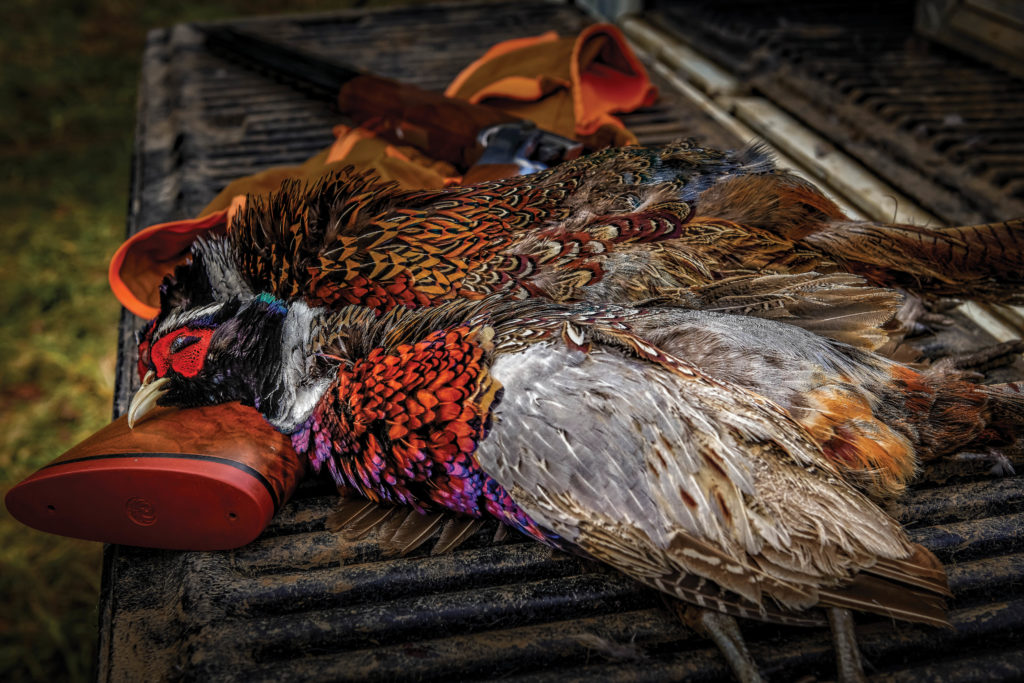
For me, watching dogs work is one of the most rewarding experiences in upland hunting. Kauder’s Llewellin setters, Blanco and Rey, are tireless workers capable of covering big tracts of land fast in a singular pursuit: finding birds and patiently waiting for hunters to approach. Llewellin setters are often confused with the English setter, but they are a pure and distinct bloodline within the setter breed and are a flecked wonder to watch in the field.
Kauder’s introduction and pre-hunt briefing reminded us that safety was the number one priority, especially with four guns in the field at once. And when Kauder discusses safety, his words of warning are spoken equally with humans and canines in mind.
I had never hunted with Altaffer before, so I wasn’t sure what to expect. Given his leadership role at Green Top, I half expected him to arrive wearing the newest hunting attire and armed with the latest and greatest gear, price tags and all. But my assumptions were way off. Altaffer’s over-and-under shotgun was seasoned, the blue steel barrels honed and well-oiled; his briar-guarded pants revealed wear from many trips into the field. He didn’t miss a shot that day.
Altaffer’s love of the outdoors was evident in our discussions as we moved through the fields searching game hidden among the dense brambles and ground cover. He mentioned Green Top only when asked; he was more interested in the hunt and his son’s progress with their own retriever Beau.
“I believe Green Top’s Outfitter Program is what sets us apart,” said Altaffer after the hunt. “Sure, we sell great products and our employees are experienced pros who actively hunt, fish and enjoy the outdoors, but we want our customers to use those products in the right environments. To do this, we partner with outfitters like Orapax that excel in making lifelong memories. We focus on hunting, angling, dog breeding and training. We want people to get out there, and we like to do it ourselves every chance we get.”
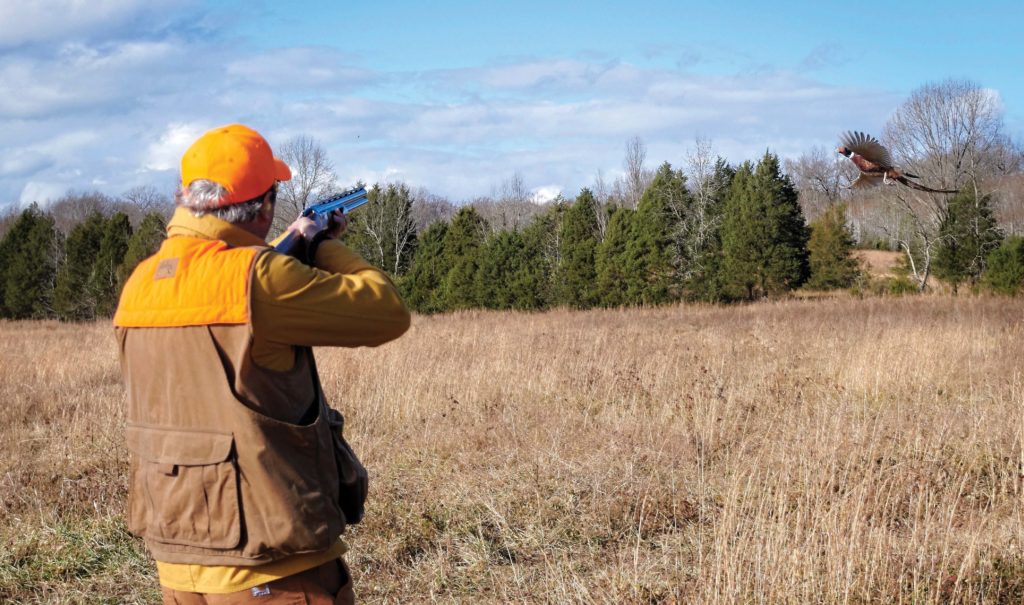
Joe Shields takes careful aim at a flushed pheasant. (photo by Ted Jurkuta) 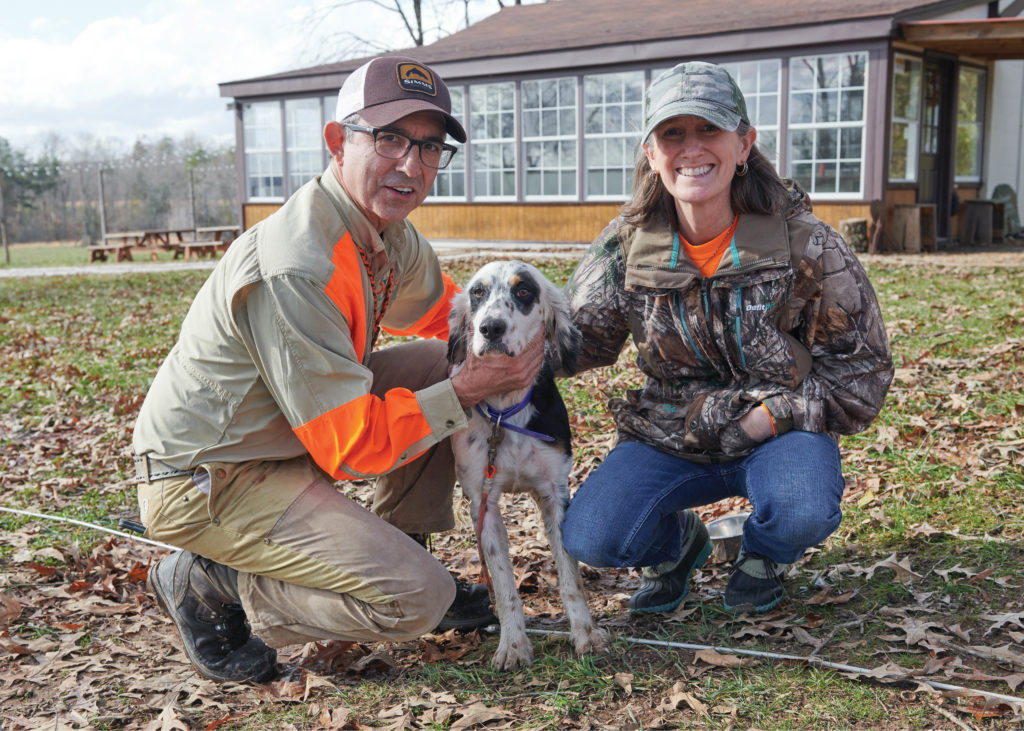
Orapax owner’s Neal and Jane Kauder with their Llewellin setter Rey (photo by Ted Jurkuta)
One of the distinct advantages of preserve hunting is that it provides hunters with an opportunity to see a variety of game birds on a single hunt. My experience with upland birds primarily centered on quail, so I was not accustomed to the pheasants’ speed and explosiveness when startled. As ground dwellers, pheasants prefer to run when looking to escape, and when they take flight, they can reach speeds up to 60 miles per hour.
Spread out in a line, we worked across the field methodically and followed Kauder’s lead. Blanco and Rey did their jobs, as did Jasper, who heeded Kauder’s commands with little correction. The dogs diligently searched for prey and roamed the fields until one of them identified the location of a bird or covey. Dogs transformed with each discovery from wanderers to statues, holding perfectly still—tails outstretched, and foreleg raised—urging us to approach and flush the birds. They retrieved after good shots, marking a job well done.
A few moments stand out. For instance, the Altaffer father-son combination at one point cautiously approached a covey of quail behind the steady point of Kauder’s setters. Later that afternoon, Shields took careful aim and brought down a flushed pheasant. He marveled at the thrill of the flush and the dog’s precise retrieval.
I was reminded of one of the great slogans in advertising history: Nike’s “Just do it” campaign. Get out there and give upland bird hunting a go. It’s good for you and arguably even better for wildlife conservation efforts.
Orapax is located 30 minutes from Richmond and 45 minutes from Charlottesville. Visit orapax.com for more information.
Eric Kallen is an avid sportsman who spends his time between his home in Charlottesville, Virginia, the mountains of western North Carolina and the shores of Fairhope, Alabama. He is always in search of adventure and never turns down an opportunity to catch a big fish.

